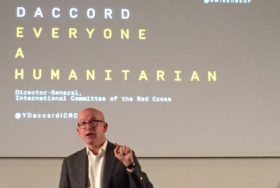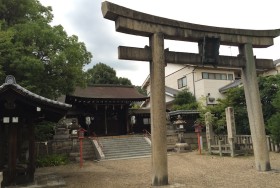
You do it on the road. Crossing San Francisco Bay in a ferry boat. Sitting with friends in a crowded café, or walking through the Getty museum. You ruminate. Ideate. Get in the space for your next great idea.
Creative flashes of insight are essential to excellence and entrepreneurism. Thinking more about thinking, and writing “How Do You Ideate?” helped broaden my creative process. Some very smart people graciously responded by offering their thoughts on how they get in the place and mood where sparks fly. Impressed by their wisdom, here is a small sampling, a recognition that ideas, like innovation, just want to be free.
Anne Cocquyt:
Anne travelled for two years in her twenties in Asia, Australia, Latin America and the United States. She scouts startups in technology and healthcare by day for a Fortune 500, and spawns her own creations at night. “Road trips strip my brain from its controlling powers. Through windy roads in Missouri or long stretches of Oklahoma’s plains, my thoughts wander into lands of ideation, not controlled by the part of my brain that is tethered to driving, listening, keeping me alive and rolling. And the more I sink into the land of creative thoughts, the clearer becomes what is important for me: my story, my startup, my idea, my life. At times I get into the ‘Flow’, where waterfalls of ideas and clear thoughts flood my brain. It may be the abandoned Sinclair station on the right or the neon sign of Midpoint Cafe on the other side of the road – any trigger might open the gates to Flow.”
Isabelle Lescent-Giles:
Visiting professor of international business at the University of San Francisco, and tenured professor of economic history at the Université Paris-Sorbonne, Isabelle advises global businesses and families on major transitions. She loves “lateral thinking and distance,” steeping herself “in a problem through reading and hands-on practical experience” on the ground, then taking a step back to “listen to an unrelated conference, to friends over dinner or lunch (my French side… I guess).” Sometimes, Isabelle goes “to a museum such as the Getty, or travels, and suddenly I will make connections between what I see and what my project is about; as if in the back of my mind little wheels are still filtering for project-related thoughts when I am not consciously thinking about it.”
Marc Hershon:
Marc is the senior manager of Naming and Verbal Identity at Landor Associates. Marc helped name the Blackberry, Dasani, and Pentium, and is also an improv comic and screenwriter. He commutes to San Francisco via the ferry, and has resisted the temptation to make friends with the “regulars.” Instead he buys a beer, and gazes “out at the Bay as the boat cuts through the water. It’s a kind of meditation, really. Sometimes I’ll jot down a note about something I’m working on. Or dash off my podcast reviews. I’ll field a stream of texts from co-writers and collaborators and fellow podcasters that are scattered across the globe. Inevitably, I dock in Sausalito, refreshed, and ready for whatever the evening might bring.” Then at 5:30 a.m., just north of the Golden Gate, Marc takes to the trails of Tennessee Valley. “Pitch dark, dressed in long pants, jacket, knit hat and gloves, with traversing poles flailing away in the pre-dawn chilly air, I alternately run and trudge up and down the rocky Fox Ridge trail. In between the coyotes howling somewhere in the distance, and the hooting of barn owls from the surrounding trees, the ideas flood to mind: Ideas for stories, brand names, movies.” How does he capture his cascading thoughts? “My iPhone makes for a handy recorder and, so long as I don’t mind my heavy breathing, I capture everything hands-free as I march through the approaching dawn.”

Mathieu Guerville:
Mathieu studied marketing in France and economics at Northwestern. He collects artifacts from notorious business scandals, when he is not at his day job as Director of Strategy and Business Development for Underwriters Laboratories (UL). “A creative moment is always short (maybe an hour at most), but it always follows a bell curve. I have the seed of an idea, it grows and takes on more details, plus new branches, and then it tapers off with a few marginal ‘improvements’. Most of my ideas stem from a root, an anchor, whether it’s a trend or something I saw that inspired me. But then the new idea, the part that’s mine, takes shape when I let my mind wander. I think in parallels: Putting two unrelated things together, or imagining a different perspective on the root/anchor. My new venture Chroma Club, for instance, is marrying the subscription business model with the trend of coloring books. Most of my ideas are small, how to create a graphic that explains a complex business visually, how to use a piece of furniture beyond its intended use, etc. I only capture on paper at the end, usually a very rough sketch.”
Yuan Nielsen:
Born in China, schooled in the Ukraine, Tanzania and Denmark, Yuan spoke ten languages at the age of 10, and had a diverse career in the performing arts, music, and design before being tasked with heading up marketing at an innovative technology company. “Sometimes I will grab my nunchakus and do Kung Fu for an hour and try not to overthink things, especially when it comes to the moves, as that often just leads to getting hit by the nunchakus. Other times, I will dedicate an entire day to creating a large abstract painting or a set of smaller paintings that tell a subtle story, as that takes me out of my head and lets me focus on what’s right in front of me. I also find a wonderful outlet in singing and practicing with my band, or going window shopping alone in the city to scout for beautiful designs.”
Creativity, Yuan says, hits you from all directions, all the time. “The trick is to be open to it long enough to let it spark ideas in you.” Where do you find your spark?


